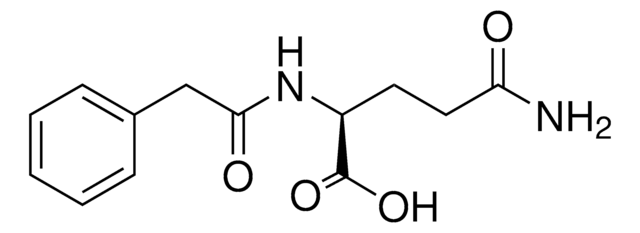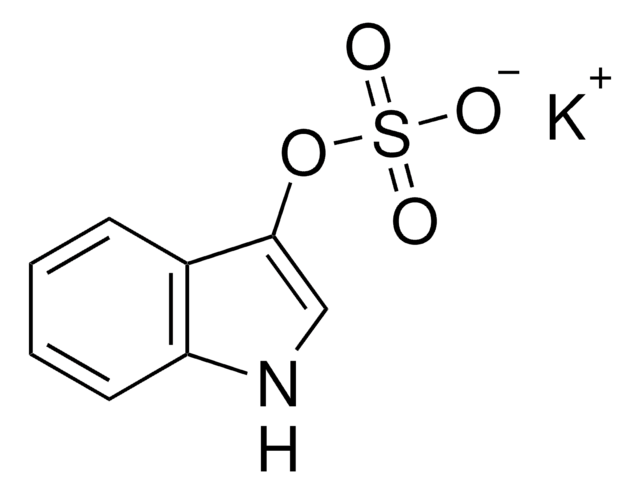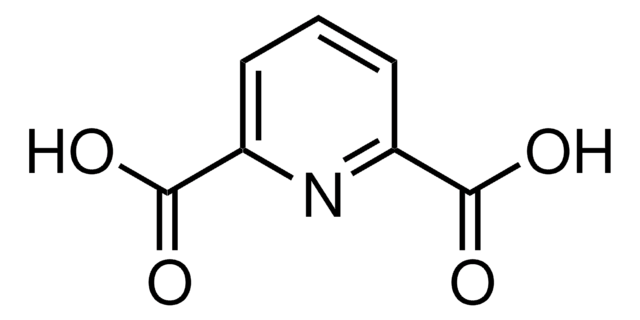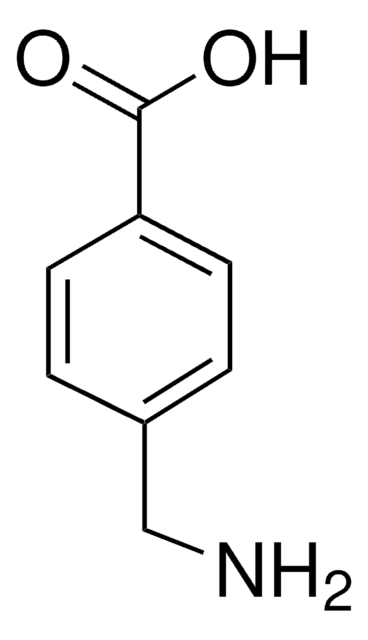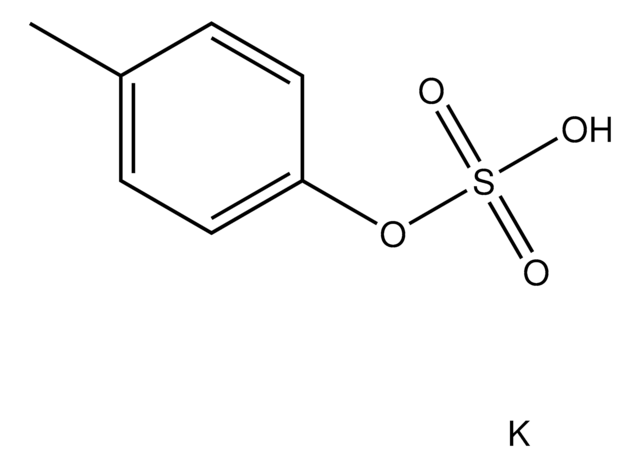96408
N-(2-Phenylacetyl)glycine
analytical standard
Sinonimo/i:
2-(2-Phenylacetamido)acetic acid, 2-Phenylacetyl glycine, NSC 408424, NSC 92778, Phenaceturic acid, Phenacetylglycine
About This Item
Prodotti consigliati
Grado
analytical standard
Livello qualitativo
Saggio
≥98.0% (HPLC)
Durata
limited shelf life, expiry date on the label
applicazioni
clinical testing
Formato
neat
Temperatura di conservazione
2-8°C
Stringa SMILE
N(CC(=O)O)C(=O)Cc1ccccc1
InChI
1S/C10H11NO3/c12-9(11-7-10(13)14)6-8-4-2-1-3-5-8/h1-5H,6-7H2,(H,11,12)(H,13,14)
UTYVDVLMYQPLQB-UHFFFAOYSA-N
Azioni biochim/fisiol
Prodotti consigliati
Avvertenze
Warning
Indicazioni di pericolo
Consigli di prudenza
Classi di pericolo
Eye Irrit. 2
Codice della classe di stoccaggio
11 - Combustible Solids
Classe di pericolosità dell'acqua (WGK)
WGK 3
Punto d’infiammabilità (°F)
Not applicable
Punto d’infiammabilità (°C)
Not applicable
Scegli una delle versioni più recenti:
Possiedi già questo prodotto?
I documenti relativi ai prodotti acquistati recentemente sono disponibili nell’Archivio dei documenti.
Il team dei nostri ricercatori vanta grande esperienza in tutte le aree della ricerca quali Life Science, scienza dei materiali, sintesi chimica, cromatografia, discipline analitiche, ecc..
Contatta l'Assistenza Tecnica.